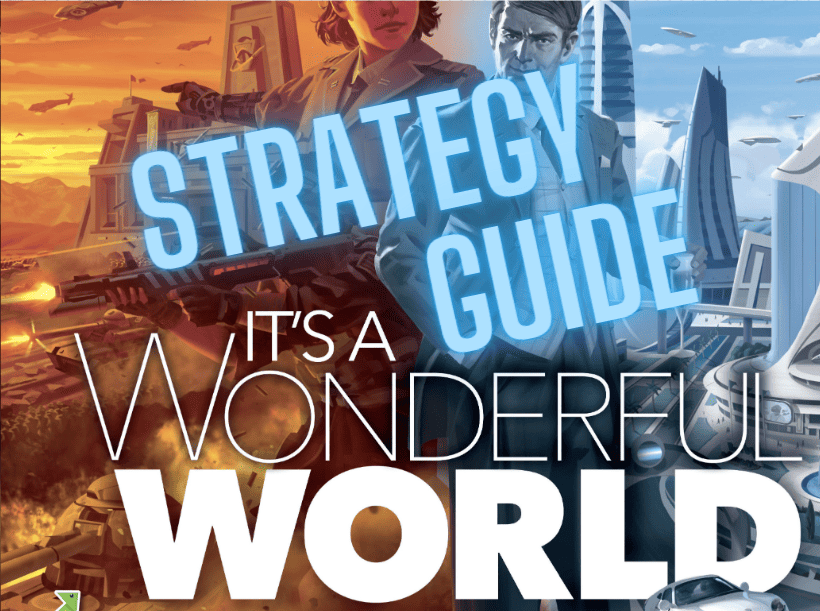
It’s a Wonderful World is a strategic card drafting and resource management game that challenges players to build the most efficient empire in a post-apocalyptic world. This game quickly enthralled me with its engaging mechanics and deep strategic elements, but it took me many games to learn the best strategies to win.
The best strategies for It’s a Wonderful World are committing to a build early, prioritizing your engine in early rounds, and utilizing all of your resources to focus on one or two score multipliers. Recycle that your opponent would find useful, and adapt your play to the number of players in the game.
Winning at It’s a Wonderful World usually comes down to razor-thin margins, so every decision is critical. There is no substitute for experience, but if you learn and apply the strategies below you will be well on your way toward building the best Empire and defeating your foes.
Choose your build and commit to it early
There are three viable builds in It’s A Wonderful World, each with pros and cons. The sooner you decide on one and commit to it, the better. Which one you choose depends on several factors, including:
- Your starting Empire Card
- Cards available in the first round
- Number of players in the game
- Your own personal play style
The three builds are: Yellow, Blue, and Green. You might ask why White and Black aren’t viable builds, and the answer is simply that there are no large Point-Scoring Cards in these colors. They are used as intermediate building blocks for some of the other builds and can add some points of their own along the way. Let’s get into the three main builds and how to construct them.
| Build | Production Colors | Multipliers | Card VPs |
|---|---|---|---|
| Yellow | White & Yellow | Yellow & Financiers | Low |
| Blue | Black & Blue | Blue & Generals | High |
| Green | White & Green | Green & Fin./Gen. | Very high |
Yellow Build
The Yellow Build is my personal favorite and is probably the most common. That doesn’t necessarily mean it’s the best, but it’s easy to build and is a good option for newer players. It relies on White and Yellow production, so you should focus on those Production Cards early. Some of the best early Production Cards for this build are:
- Recycling Plant
- Financial Center
- Industrial Complex
- Harbor Zone
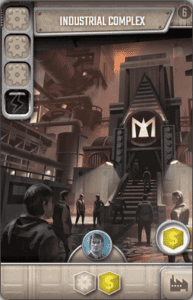
Yellow Build cards tend to have lower VP values by themselves when compared to Blue or Green builds, but this is compensated for by the amount of Yellow and Financier multipliers you can crank out. This build scales incredibly well and scores tons of points in the final round if executed correctly. Some of the best Yellow Point-Scoring cards include:
- World Congress
- National Monument
- Secret Society
- Giant Tower
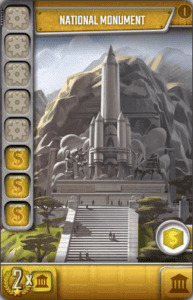
After building up your White & Yellow production, focus on completing cards with Financiers, Yellow Multipliers, and Yellow Buildings. Many cards have more than one of these attributes, making them very useful.
Blue Build
The Blue Build is done with primarily Black and Blue production. Many of the Point-Scoring Blue cards are worth a lot of VPs on their own, making them more attractive than their Yellow counterparts in that aspect. You can also score a tremendous amount of points through Blue Multipliers and General Multipliers.
Blue production usually comes from Black cards, so if you go this route you should focus on Black production early. The best cards for quick Black production are:
- Giant Dam
- Nuclear Plant
- Underground City
- Wind Turbine

Your black production can then be used to transition into Blue production with cards like ‘Zeppelin’, ‘Aircraft Carrier’, and ‘Icebreaker’, which can then be converted into Blue Point-Scoring cards. Some of the best Blue Point-Scoring cards include:
- Alexander’s Tomb
- Fountain of Youth
- Treasure of the Templars
- Lost Continent of Mu
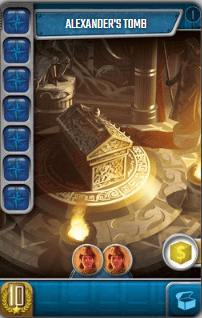
After building up your Black & Blude production, focus on completing cards with Generals, Blue Multipliers, and Blue Buildings (often with high VPs). Many cards have more than one of these attributes, making them very useful.
Green Build
The Green Build is another solid option but can be trickier for newer players. I have seen people say that it’s generally not as strong as Yellow or Blue but in my experience, it’s a perfectly viable way to go, especially if you’re not a top-tier online player. It can be a great option in games with higher player counts when most other players are going for Yellow and Blue Builds since you won’t be competing for the same cards.
Green Build cards tend to have very high VPs which, again, make it a great option with lots of players since you’ll be relying less on Multipliers. You also have the option of scoring with both General and Financier Multipliers, but for efficiency’s sake, it’s best to focus on just one of the two (your choice).
Scoring well with a Green Build requires a lot of Green Production since its Point-Scoring cards are very expensive. Focus on White and Green production from the start with cards like:
- Military Base
- Research Center
- University
- Neuroscience
Once your Green Production is off and running, focus on completing cards with Generals OR Financiers, Green Multipliers, and GreenBuildings (often with very high VPs). Many cards have more than one of these attributes, making them very useful. Some of the best Green Point-Scoring cards include:
- Time Travel
- Teleportation
- Security Clearance
- Unknown Technology
Focus on production early to build your engine
It’s a Wonderful World is, first and foremost, an engine-building game. As is the case with any engine builder, you must first focus on quickly and effectively creating your engine if you want to win. This means prioritizing Production Cards (cards that produce Resources) before turning your attention to Point-Scoring Cards (cards that generate lots of points).
DID YOU KNOW? It’s a Wonderful World has several amazing expansions that add new rules, artwork, and mechanics to the already fantastic base game. Check them out on Amazon!
In general, it’s best to focus on cards that produce just one or two colors for the first couple of rounds. Which colors you pick will depend on several factors (discussed above), but it’s important that you choose those colors early and then quickly complete as many Production Cards in those colors as possible.
Find a purpose for all of your Resources
Winning in It’s a Wonderful World is all about efficiency. Make sure that all of the Resources you’re producing have a specific job so that they don’t go to waste. Sure, you can send any ‘extra’ Resources to your Empire Card to eventually be turned into Krystallium, but that’s a horribly inefficient use of your limited Resources.
When drafting cards, do your best to ensure that all of the resources you currently have at your disposal can be used to help complete a Development Card. For example, if you just started producing 2 resources and you don’t currently have any Development Cards that can make use of them, draft a card that can. In general, your goal should be to limit (or completely eliminate) sending Resources to your Empire Card.
Adapt your play style to the number of players
It’s a Wonderful World is a fantastic 2-player game, but it’s just as fun (if not more so) with 3 to 5 players. One common mistake that players make is trying to apply the exact same strategies to larger player counts as they do for 2-player games. Your approach to the game needs to factor in how many players there are!
In 2-player games, you are far more likely to win Production Bonuses that grant Generals and Financiers because there are simply fewer players competing for them. This means that General & Financier Multipliers become very powerful – some of them most desirable cards in the game.
The flip side of that coin is that as you add more players to the game you are far less likely to win Production Bonuses, making the Financier & General Multipliers much less valuable. In 3 to 5-player games, you should shift your focus and prioritize Color Multipliers instead since they are far more reliable.
Keep 2 to 5 cards in each round
I often see players struggling with the question of how many cards they should keep in any given round. This is a difficult question to answer because it’s dependent on many factors but, as a general rule, you should usually choose to keep/build between 2 and 5 cards in each round, usually keeping 3 or 4.
The rest of your cards (usually 2 to 5 of them) should be chosen specifically to be recycled and contribute to the completion of the cards in your Construction Area.
I find that keeping 3 or 4 cards usually works out pretty well, allowing a nice balance between constructing enough Production Cards and having the raw resources to do so. Most of the best players (as ranked on BGA) tend to recycle around 3 cards per turn and keep 4.
Complete at least 1 card in the first round
Getting production started as soon as possible is essential to building a strong engine. At the end of the first round you should always have at least 1 Production Card completed, and ideally, you’d like to have 2. Any extra Resources can be put towards starting construction of other cards.
To accomplish this, draft 1 or 2 Production Cards that fit into your overall build strategy and that are relatively cheap to produce. Then, draft enough cards that can be recycled to complete the Production Cards you’re focused on. This usually isn’t too difficult when combined with the Resources you get from your Empire Card to start.

In the example above from a top-rated player on BGA, he kept 4 cards and recycled 3 to give him two Yellow and one White resource. Combined with the Resources from his Empire Card, he’ll be able to complete Giant Dam and produce 4 Black resources during the production phase of the first round which he can then use to work on ‘Icebreaker’ and ‘Aircraft Carrier’. With the Green Resource from his Empire Card, he’ll also be able to complete ‘Icebreaker’ on the first round of the game. Very efficient!
Choose 2 scoring multipliers to focus on
Since winning the game is all about efficiency, it’s best to remain hyper-focused on just one or two means of scoring. Going all-in on one or two Multiplier types will be much more powerful and efficient than spreading yourself out and dabbling in several Multipliers.
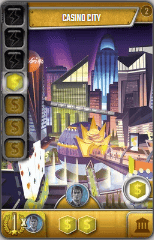
But how do you know which Multipliers to focus on? That will largely depend on the overall build type you choose (discussed above) but, in general, you’ll want to try to pair the following:
- Generals & Blue/Discovery Buildings
- Financiers & Yellow/Project Buildings
- Green/Research Buildings and EITHER Generals or Financiers
These combinations have a natural synergy, with many cards that work well to score for both multipliers in the pair. This makes for very efficient scoring, which is the whole point.
Structure and Vehicle Multipliers can and do mix in with the three main pairings listed above, but they’re usually incidental or ‘extra’.
Recycle to complete cards before Production
This tip will come off as obvious to many of you, but bears pointing out because I see many new players fail to make use of it. When allocating your recycled resources, make sure that you prioritize completing any Production Cards that you can. When the cards are completed, they immediately go to your Empire and begin contributing their additional Resources on that round.
CHECK IT OUT: If you like tableau style, engine-building games like It’s a Wonderful World, you’ll also enjoy Forest Shuffle. Of course, I have also written a Complete Strategy Guide to Forest Shuffle to help you win!
This effect can snowball and have a drastic impact on the game. For example, if I use my recycled resources to complete an ‘Offshore Rig’ then the yellow resource from that card can then be used to complete another card which would then also immediately begin contributing its resources for subsequent colors.
Build point-scoring cards over several rounds
We have discussed how important it is to focus on completing Production Cards in the early rounds to get your engine up and running, but it’s also important to not completely neglect Point-Scoring Cards. These don’t produce any Resources themselves but often contribute valuable Multipliers, Victory Points (VPs), and/or Generals & Financiers.
Even in the early rounds, if you see cards that work well with your build to eventually score a lot of points, you should snatch them up and put them in your Construction Area. Don’t allocate resources to completing them in the early rounds (focus on production!), but it’s important to collect these Point-Scorers because you never know if or when they will turn up again.

If and when you have ‘extra’ resources that you can’t use for complete Production Cards you can begin to work on completing your Point-Scorers. Then, in the later rounds of the game, you’ll have those cards available and they’ll be nearer to completion already.
Convert your engine into points in the final round
Speaking of which, in the 4th and final round you should be focused entirely on using the engine you’ve built and extracting as many points out of it as possible. Don’t waste any Resources on completing more Production Cards unless the Resources they produce can be used to complete more Point-Scoring Cards.
You should also consider discarding/recycling any unfinished Production Cards to create more Krystallium. The same goes for Point-Scoring Cards that you know you’ll be unable to complete – go ahead and sacrifice them if it means you’ll be able to use Krystallium to finish something else.
Draft more powerful cards to be recycled
It’s easy to figure out what color of cards you need to complete the cards you’re working on and then just start drafting cards based solely on their color to be recycled. Not all cards are created equal, however, even when they’re just going to be recycled.
Look at your opponents’ builds and see what cards they are likely to want to build. If they’re going for a Blue Build with lots of Blue Multipliers then you’d do well to prioritize drafting a blue card, especially if it provides more Blue Multipliers. Don’t just blindly take the color of card you need for recycling – look to steal away as much value from your opponents as possible!
Prioritize your draft based on supply & demand
Similarly, you should take care to draft cards in short supply. If you need 3 yellows and 1 black to be recycled and there are 5 blacks available, between the hands, draft the yellows first since you need more of them and they’re likely in shorter supply. The blacks will almost surely be there when you’re done securing the yellows.
This is another case where knowing what your opponent is doing is important. If you’re going for similar builds then the same colors will be in short supply. You’ll need to prioritize securing those colors earlier in the hand so that you don’t miss out.
When in doubt, focus on White production early
Sometimes when a game first begins it’s hard to know which direction to go. The cards for any one color of build might not be particularly useful or powerful and you want to keep your options open. In this case, try to focus on White production in the first round because it can easily be converted into production of any other color.
Once you’ve built up your white production in the first rounds, you can decide on a build (more on that very soon) in the second round and quickly convert your production by completing the following Production Cards:
- Yellow Production: Financial Center
- Black Production: Nuclear Plant
- Green Production: Research Center
- Blue Production: Submarine
Thanks for reading! If I missed something or you have your own opinions, please drop a comment below.
What is thr benefit of along out first in hand? Seems to me like you would never want to assume…
Your strategy comments are excellent, well thought out and very helpful! Thank you
You would only get to draw and play a Sanctuary card on turn two of round one if the Region…
Rule question. If in phase one of round one I play a Region card with a Clue symbol at the…

Leave a Reply